Model Robustness and Sensitivity
- Results need not match exactly, which allows for variance.
- SW (algorithm, for example) and HyperWorks variations (processors, RAM, for example).
- Include sensitivity by checking model robustness.
- Qualify a model as a reference model for further studies.
- Define a sensitivity corridor.
- Parameters to use: Random Nodal Noise.
- Changes in physical parameters in sensitivity studies.
- Collect sensitivity details so results remain in the sensitivity range/corridor.
- Customer specific validation criteria (engineering criteria for
validation).
- Include the physics of the problem.
HVVH Radioss Sensitivity
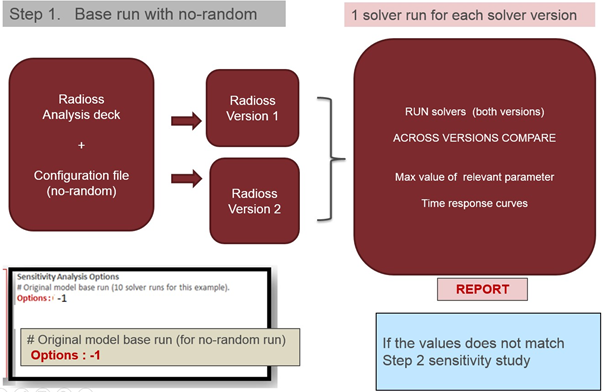
Figure 1.
Check if the model can be considered a reference model for further study. Random noise/sensitivity analysis can be a base run with different seed values. Compare across Radioss versions using the sensitivity corridor.
- Sensitivity corridor.
- Response curves (time vs. response).
- Statistical details.
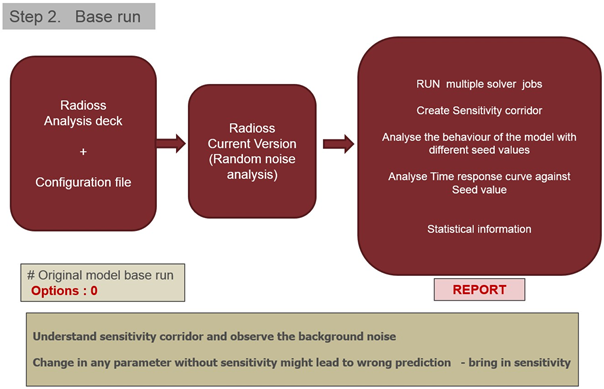
Figure 2.
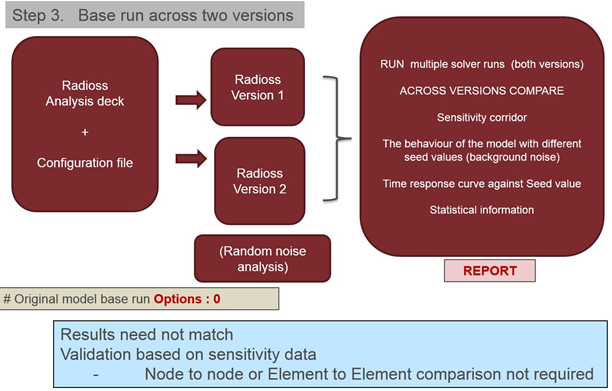
Figure 3.
HVVH OptiStruct Sensitivity
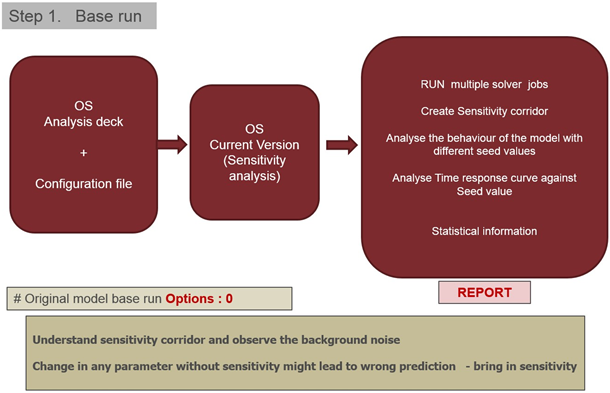
Figure 4.
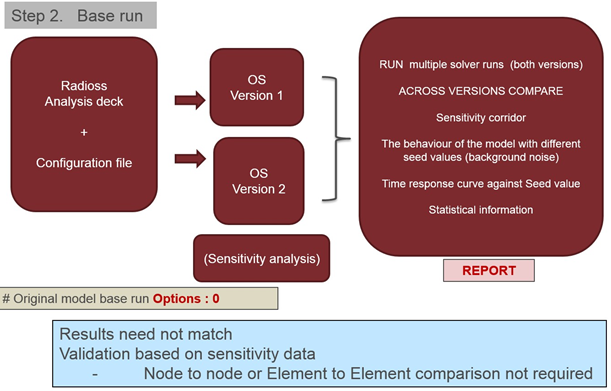
Figure 5.
Verify and Validate Field Data/Proving Ground Data/Time History Data

Figure 6.